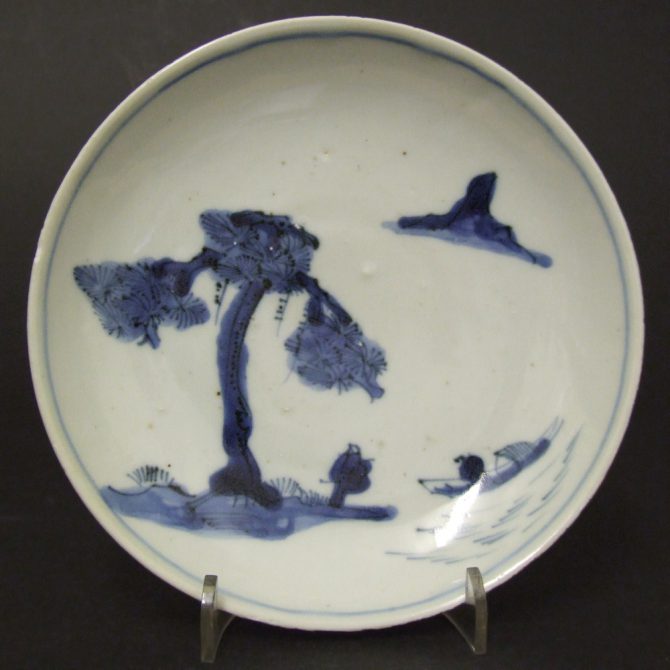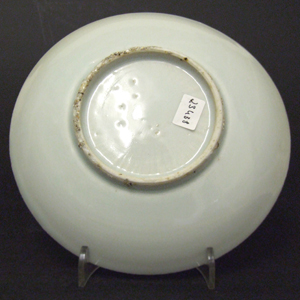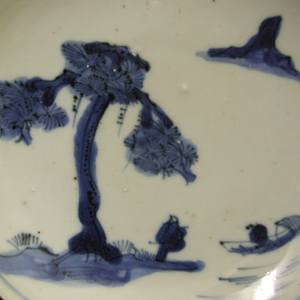
TIANQI 1621 – 1627 Ming Porcelain
A Ming Blue and White Porcelain Dish Made for the Japanese Market, Tianqi Period 1621-1627. The Sparse Simple Design Consists of a Promontory with a Figure Under an Old Gnarled Pine Tree with it`s Branches Hanging Low While a Small Boat with a Single Figure Arrives, a Mountain can be Seen in the Background.
SOLD
- Condition
- Typical Mushikui (insect-nibbled) fritting to the rim.
- Size
- Diameter : 15.3 cm (6 inches).
- Provenance
- From a Private English Collection of Chinese and Japanese Porcelain.
- Stock number
- 23438
Information
Ko-Sometsuke :
Ko-Sometsuke, meaning `Old Blue and White` is a term used to describe Chinese blue and white porcelain made for Japan. This late Ming porcelain was made from the Wanli period (1573-1620) and ended in the Chongzhen period (1628-1644), the main period of production being the 1620`2 and 1630`s. The porcelain objects produced were made especially for the Japanese market, both the shapes and the designs were tailored to Japanese taste, the production process too allowed for Japanese aesthetics to be included in the finished object. Its seams firing faults were added, repaired tears in the leather-hard body were too frequent to not, in some cases, be deliberate. These imperfections as well as the fritting Mushikui (insect-nibbled) rims and kiln grit on the footrims all added to the Japanese aesthetic. The shapes created were often expressly made for the Japanese tea ceremony meal, the Kaiseki, small dishes for serving food at the tea ceremony are the most commonly encountered form. Designs, presumably taken from Japanese drawings sent to China, are very varied, often using large amount of the white porcelain contrasting well with the asymmetry of the design.

